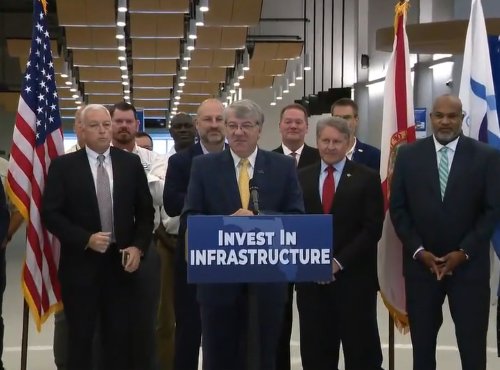The Florida Department of Transportation is helping distribute $250 million to help ports statewide recover from revenue declines in 2020 – sparked by the COVID-19 pandemic – as well as fund infrastructure investments.
[Image via the Florida DOT]
“Not only are Florida ports a key economic driver for their surrounding communities, but also for our state as a whole,” said Governor Ron DeSantis (R) in a statement – noting that Florida’s ports generate an economic impact of $117.6 billion annually and support 900,000 jobs.

“From the cruise industry, to cargo, to supporting military operations, our ports provide nearly one million jobs for Floridians,” the governor added. “This $250 million investment in our ports is a commitment to our future economic prosperity for generations to come.”
The economic value of ports nationwide is significant. According to a study conducted roughly every four years by Lancaster, PA-based consulting firm Martin Associates, the total economic value U.S. coastal ports provide in terms of revenue to businesses, personal income and economic output by exporters and importers topped $5.4 trillion in 2018.
This accounted for nearly 26 percent of the nation’s $20.5 trillion economy in 2018, the firm said; an indicator that the value of cargo activities at U.S. ports remains a key factor in America’s economic vitality.

“The impact seaports have on every region in our state is enormous and … [our] state continues to make key investments in our transportation network to keep our state moving forward and ensure that goods make it to consumers efficiently,” added Kevin Thibault, Florida DOT secretary.
“The funding announced today will have lasting positive impacts and significantly assist our seaport partners, as well as their surrounding communities,” he noted.
The Florida DOT noted that this $250 million in fiscal support for state ports comes from the $350 billion Coronavirus State Fiscal Recovery Fund included within the $1.9 trillion American Rescue Plan. Guidance issued by the U.S. Department of the Treasury in May allows state governments to use that relief aid on infrastructure needs.
 States
States
Georgia DOT Foreman Receives Two Heroism Awards
January 2, 2026 States
States

